Review for Gankutsuou - The Count of Monte Cristo
Introduction
Why release SD material on Blu-ray? It doesn’t make much sense when you first think about it; material created at 480 or 576 lines of resolution on a 1080 line format. It’s a universal problem, as televisions have only comparatively recently become HD, and there’s decades of material out there in SD format. With US TV, most of it was actually shot and finished on film till the mid-eighties, and if there is enough demand for earlier shows, then Blu-ray can and is done. But from the mid-eighties to the late nineties, US TV shows were edited on video, which means that masters for those shows are NTSC only. But, they were shot on film, so if the money and the demand is there, even those shows can be brought back in HD on Blu-ray as has happened with Friends, Star Trek The Next Generation, and The X Files (although recreating and recompositing HD special effects instead of the original SD effects are an added expense that some studios choose not to shell out on). Of course modern television shows are made in native HD, so that is no longer an issue.
Anime went through a similar SD period, although its SD window lasted from the end of the nineties through to around 2007. Prior to that, most anime was made the old fashioned way, cel and paint, shot on film, and telecine masters created from that at NTSC resolution. A Blu-ray release for old shows simply requires the money and the customers, and finding that original film. Today, it’s all made in some form of HD, so Blu-ray is pretty much the norm. But at the end of the nineties, the anime industry shifted from cel and paint to digipaint, animation directly on computers, and given that everyone still had SD televisions, no thought was given to future-proofing. Television anime were all animated at 480 lines of resolution; perfect for DVD, not so much for Blu-ray. Gankutsuou: The Count of Monte Cristo dates from 2004 smack bang in the middle of that period, during the anime bubble when studios could be extravagant with their projects, but when the majority of the shows were in SD. Unlike US TV shows shot on film, which could be re-mastered in HD, the only way to get native HD for these anime is to go back to the beginning and reanimate it from scratch.
So once again, why Blu-ray? Well, space is one thing. Putting aside the European outliers that actively put native SD material on Blu-ray and get some 30 odd episodes onto single discs, it’s still possible to get a 24 episode series down to as few as two Blu-rays when you upscale the image to 1080p, although three or four discs is usually the norm. Cutting that down from some 4-8 DVDs can save some serious shelf-space. There’s also the coating of the discs which makes them more robust and scratch resistant than DVDs, a boon to a collector. Audiophiles will also love the prospect of lossless and uncompressed soundtracks, richer and clearer than the compressed audio on DVD. Videophiles on the other hand will welcome animation at the native frame rate, 24 progressive frames per second, as opposed to an interlaced NTSC format, and especially in the UK where for those SD period shows we usually got native PAL conversions with 4% speed-up if we were lucky, or more usually murky, ghosting, NTSC-PAL standards conversions.
But they are still just DVDs scaled up to HD, right? Not exactly, as a 480 line SD source is not the same as a DVD. There’s not a lot of room on a DVD, and given its now archaic compression format, it can be a pretty tough squeeze getting four or six episodes onto a dual layer disc. The colour palette too is limited, so what might look like smooth, clear, and gorgeous looking anime on the masters, will probably suffer from compression, and banding, a smidge of pixellation and mosquito noise, and possibly picture break-up even on the most perfectly encoded DVD, with the colours not quite matching the original source. Blu-ray has a lot more room, has a far greater colour palette, and uses better compression algorithms. If you master a Blu-ray from the source material, there’s a far greater likelihood that it will look like the source material.
The trick is in getting the upscale right. You can’t just zoom a 480 line image up to 1080 lines and expect it to look the same. Previously smooth outlines will become broken and stair-stepped, pixel points of colour will become blocks. And since that is all the picture information you have to work with, you have to finesse it some to get it to look good in HD, you have to smooth out the lines, even out the colour. You could go through frame by frame and do it by hand, but then you might as well re-animate from scratch. Studios have software to do this, just as your HD televisions have software to scale up the SD channels and your DVDs, although the studio software should be much better. It’s all about getting the right balance, as every show is different; retaining the essential image information while reducing noise and artefacting, all without losing detail. Get it right, and you have the Baccano, Black Lagoon and the second Samurai Champloo Blu-rays. Get it wrong and you have the first Samurai Champloo and Funimation’s current Dragon Ball Z Blu-rays.
Gankutsuou: The Count of Monte Cristo was Gonzo’s magnum opus, it was wholly experimental in the way that it used colour, the way it animated its characters, and visually it’s unlike any other anime out there. It’s going to need some special attention if the Blu-ray upscale is going to do this show justice, and I’ve got the original Geneon DVDs to compare it to.
Mahiro Maeda’s adaptation of the Count of Monte Cristo does add a couple of new twists to it, not least of which is shifting the story to the distant future, in an aristocratic and royalist Paris that figuratively is the centre of the universe. More striking is that unlike any other adaptation that I can recall, Gankutsuou tells the story from the point of view of a young man who encounters the enigmatic Count of Monte Cristo. Albert de Morcerf finds the ennui of the aristocratic life unbearable, so with his best friend Franz d’Epinay, he leaves home to find himself. In his journey he ends up on the hedonistic paradise of the solar system, Luna, just as Carnival is about to begin. It’s there that he first meets the enigmatic Count of Monte Cristo, a blue skinned man of devilish aspect, when the Count saves him from a ruthless gang of kidnappers. Much to Franz’ concern, Albert is taken with the older man, fascinated by his attitude to life, and his unique style. When the Count tells him that he is looking to move to Paris, Albert is quick to offer his hospitality, promising to introduce the Count to all the movers and shakers in the capital. What Albert doesn’t know is that the Count has ulterior motives, and that his true intentions will be made clear to the families of Edouard de Villefort, Baron Danglars, and Fernand Mondego. Mondego changed his name and his whole identity 25 years previously however, and he now goes by the name of Fernand de Morcerf, Albert’s father. Now these three men, and their families must pay for what happened to an innocent named Edmond Dantes.
All The Anime presents 24 episodes of Gankutsuou – The Count of Monte Cristo across 4 Blu-ray discs.
Disc 1
1. At Journey’s End, We Meet
2. Until The Sun Rises Over The Moon
3. 5/22, Stormy
4. A Mother’s Secrets
5. Do You Love Your Fiancée?
6. Her Melancholy, My Melancholy
Disc 2
7. The Secret Flower Garden
8. A Night in Boulogne
9. I Dreamed A Dark Dream
10. The Letter From Edmond
11. An Engagement Broken
12. Encore
Disc 3
13. Haidee
14. Lost Souls
15. The End of Happiness, The Beginning of Truth
16. Scandal
17. The Confession
18. The Duel
Disc 4
19. Even If I Should Stop Being Me
20. Farewell, Eugenie
21. The Golden Boy’s True Identity
22. Counterattack
23. Edmond Dantes
24. At The Shore
Picture
Gonzo were well known for their fondness of eye-candy, and their willingness to invest more in the look of a show than its contents. It looks like they threw everything at the screen for this one. It’s bright, it’s garish, it’s lush, lavish and rich, it’s wholly inventive and unlike anything you have seen before. This is a re-imagined Paris, full of aristocracy and extravagance, and the animation reflects that, with grand designs, enveloping CGI vistas, and a visual creativity that belongs in surrealist art. The costume designs are fabulous, and the unique way of rendering textures, patterns and colours means that only the characters skin is conventionally coloured. Their hair or their clothing is like a window onto another texture, and as that window moves, you see different parts of that texture revealed. It’s off-putting at first, but once you get used to it, you realise that it fits in perfectly with this breathtaking universe that Gonzo have created.
On the Blu-ray, Gankutsuou gets a 1.78:1 widescreen 1080p transfer. I asked All the Anime, and they confirmed that they have used the Japanese Blu-ray masters for their release. You might recall this Fandom Post forum post which offered some screen comparisons between the DVD and the Japanese Blu-ray which raised a few issues and eyebrows. The proof of the pudding is in the tasting of course, and luckily I have the Geneon discs at hand to compare. First the Blu-ray. It’s not bad at all at first acquaintance. The character outlines are certainly sharp and look high definition, but the real positive here is the 24fps progressive playback. The animation is smooth, flicker free and other than a hint of moiré on fine detail in a couple of scenes and the inevitable banding, the transfer looks flawless. Most apparent is that the end credit sequence is unmarred by compression artefacts.
Then I put the DVD in. Sure enough, the interlaced, 30fps transfer isn’t ideal, offering a slight sense of flicker to the image, pans and scrolls are a little jerky, the end credit sequence pretty much makes the DVD player surrender and cry, and this comes from a period when anime distributors didn’t offer progressive encodes on NTSC discs. But once you get past that, it becomes clear that the Blu-ray authors went overboard with the filtering. Certainly character outlines aren’t as sharp on the DVD as they are on the Blu-ray, but there is so much more texture detail on costume art, on hair, on background architecture that the DVD actually looks sharper overall. On top of that, there’s a degree of grain structure on the DVD that isn’t visible on the Blu-ray, and given that this is a digital animation, and any grain would be the creator’s intent, the loss of it on the Blu-ray has to be an error. But worst of all is just how vivid and striking the colours are on DVD, where you would expect the Blu-ray to excel. I do think that they have gone too far with the filtering and post-processing on the Blu-ray, and I can’t help but feel disappointed.
The images used in this review were kindly supplied by All the Anime.
Sound
This being a French UK co-distribution, you’ll find DTS-HD MA 2.0 Stereo English, French, and Japanese, with English and French subtitles and signs, locked during playback. It looks like one of those titles that is limited in what it can do with subtitles, and I did notice in episode 3, there were two conversations happening simultaneously, but only one was subtitled. But this is a singular occurrence, and the subtitles are otherwise accurately timed and free of typographical error. This being from the Japanese masters, there will be Japanese text burnt in on screen to translate French dialogue, spoken or printed. For me, the Japanese audio will always be preferable, not just for the French narrator, but also the voice actor performances. I had my issues with a couple of performances in the English dub, but this time I turned a deaf ear to them and listened to it with a more open mind, and this is a good dub that conveys the emotion and drama of the piece well.
There’s no argument here though, the Blu-ray excels when it comes to the audio. It’s not just the acting, but this is a show that is rich with music and effects. You have Jean-Jacques Burnel of The Stranglers fame providing the theme songs, but there is also an orchestral score to the show, there are scenes at the opera, classical piano music, it’s an audiophile’s delight, and lossless audio is very much the way to go here. Putting that DVD in afterwards, with its Dolby Digital 2.0 Stereo audio came as something of a disappointment, hearing the harshness of compression and tinny distortion around the high frequencies, which I had never heard before I’d listened to the same music on the Blu-ray.
Extras
Following the All the Anime and @Anime logos, the discs boot up to animated menus. The only extras on the discs are the textless credits, the textless opening on disc 1, and the textless closing on disc 2. In terms of extras, this is the same as the Funimation S.A.V.E. re-release.
I didn’t get to see the final retail product, but Gankutsuou comes in a shiny steelbox, and there is a 16-page colour sketchbook.
It’s a shame that All the Anime couldn’t source the extra material that came with the Geneon discs, as there was quite a bit of stuff to appreciate.
Conclusion
Gonzo had a reputation as purveyors of anime eye-candy. And with shows like Burst Angel, Basilisk, Blassreiter, and Gantz in their catalogue, I have to say that it is a richly deserved reputation. Then along comes Gankutsuou – The Count of Monte Cristo, and it certainly lives up to the eye-candy reputation, but it also excels in terms of story and character, indeed it could well be the best thing that Gonzo have created. It’s certainly up there with Welcome to the NHK in my estimation, and it beats NHK hands down when it comes to the quality of the animation.
Despite all the glowing reviews, the first time around I did have one or two qualms about a Japanese anime adaptation of a classic French novel. I did wonder if anything would be lost in translation, or if moving the story forward a few thousand years into the future, and giving it a sci-fi spin would somehow lessen the impact. I needn’t have worried. If the Japanese do like one thing, it’s a good revenge story. Remember, Oldboy was a Japanese manga before it became a Korean hit movie. Gankutsuou is a rich, measured, and thrilling tale of vengeance. It also pulls no punches, it’s certainly more adult than the usual anime series, and it’s fiendishly smart and well written as well. That is just as true for this viewing of the Bu-ray, and the show certainly doesn’t lose anything in the re-watch.
It’s been so long since I read the original Dumas novel that I can barely recall it through the mists of television adaptations and movies, but from what I can tell, the future setting is hardly as major a departure as is the story’s new point of view. There may be aliens and spaceships in this anime adaptation, but it’s still set in Paris, and this is still very much a tale of the aristocracy, and betrayal in the pursuit of power. It allows for some absolutely fantastic artwork, character design and world visions, but the really significant alteration is the addition of Gankutsuou as a power and driving force behind the Count’s search for revenge. It makes the Count a more tragic and sympathetic a character, in that he’s practically at war with himself, the last vestiges of his humanity at odds with retribution as a force of nature within him.
The biggest change is that the story is told from the point of view of a young fifteen year-old son of the aristocracy, Albert de Morcerf. He’s the one who first encounters the Count, and he is instantly taken with this cool, charming, alien presence. The Count uses him to get noticed by the movers and shakers in Paris, but the relationship that develops between them is the driving force of the story. It’s a father son dynamic of sorts, with the Count apparently providing the strength of personality, the inspiration and example of honour that Albert obviously isn’t getting from his own father. In fact, when the Count first arrives in Paris, although he makes quite the visible splash, it seems that the extent of his vengeance is really just limited to exposing the hypocrisy and corruption around him. There initially isn’t that much malice in his actions, and even though it begins to throw Albert’s social circle into turmoil, he still remains entranced by the Count, no matter how distrustful his friends are.
Gankutsuou is a grand, epic tale of revenge, operatic in intensity and visually breathtaking, but if I do have one complaint… well it’s more of an observation than a complaint, in that the show doesn’t work all that well as an episodic experience. It’s almost as if the episodes here are like chapters of a novel, and while a novel may have an overall structure, rhythm, and energy, that doesn’t necessarily translate to the individual chapters. Some episodes here may be dramatic and thrilling, while others may be downbeat and low key. I can well imagine that watching this show on a weekly basis would be problematic in maintaining one’s interest. Of course that isn’t an issue at all with a boxset, where you can marathon the episodes, or watch however many you feel like at that moment. In other words you can treat it just as you would the novel. Once you get started, it’s very easy to watch a whole disc at one sitting, and you may be even tempted to stick the next one in as well.
What I am intensely grateful for is the way the story has been plotted. A lot of Gonzo shows that I watched wound up losing the thread in the closing episodes, most often because they were adapted from an ongoing manga, and the animators had to make something up for the conclusion, and wound up cramming too much in. That’s not a problem with the Count of Monte Cristo of course, and the story comes to a natural conclusion at its own measured pace. But what I was really thankful for was the final episode, which gave the story a much-needed epilogue, to show how the preceding events had impacted on the characters and changed their lives. Rather than climaxing with a crescendo of explosions and emotional carnage, for once a show gets a sedate, and reflective closure, and it was this one episode that nudged my opinion from brilliant to timeless classic.
I was going to have a mini-rant about the video quality of the Blu-ray, but then I considered something. Raiders of the Lost Ark is one of my favourite movies. It was a favourite when I saw it broadcast on an old wooden, mono CRT TV, it was a favourite on pan and scan VHS, and it’s still a favourite on Blu-ray. No matter the minutiae of video and audio transfers and restorations (and I do admit that the video on this Blu-ray does disappoint), it cannot detract from the quality of the material. Gankutsuou is quite simply Gonzo’s finest hour. It is the best show that they made, and the finest literary adaptation I have seen in anime. It is quite simply stunning story-telling from beginning to end. As this Blu-ray is the only way to buy this show in the UK, then you should buy it; don’t miss out.
Should you double dip if you imported the DVDs though? If you are an audiophile, and have a worthy home theatre set-up, then yes. The difference in sound quality between the DVDs’ compressed Dolby Digital and the Blu-ray’s lossless audio is palpable. But if you’re a videophile, I don’t know. If you like smooth animation then the Blu-ray excels. But if you’re after detail, and clarity and vivid colours, the DVDs are better, even with their problems with interlacing. And if you have the Geneon boxset instead of the Funimation S.A.V.E. release, then you will not want to give that up, with its superior extra features, and gorgeous box.
tl;dr – Buy Gankutsuou!
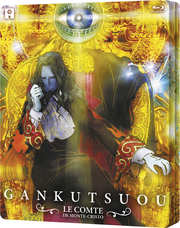
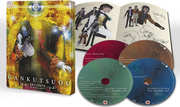
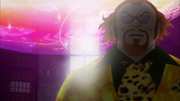
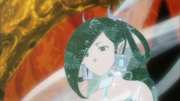
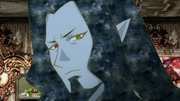

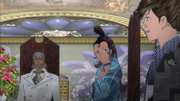

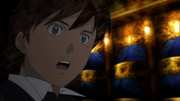
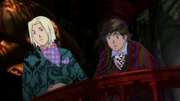






































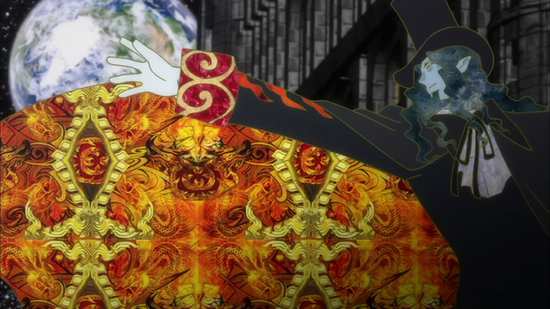



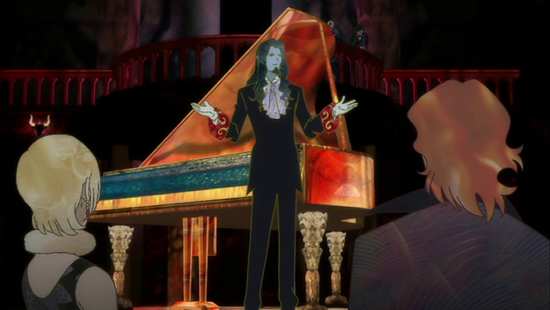
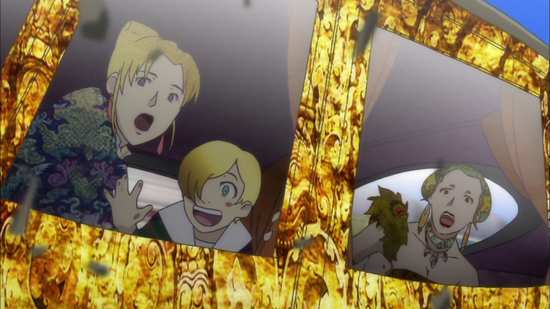

Your Opinions and Comments
Be the first to post a comment!